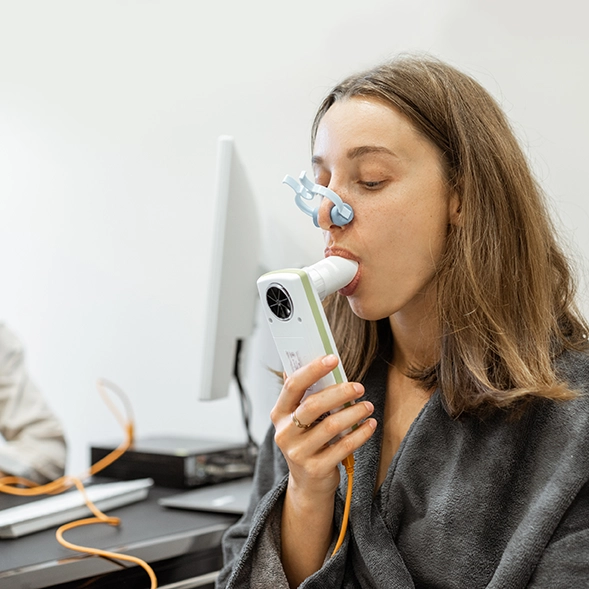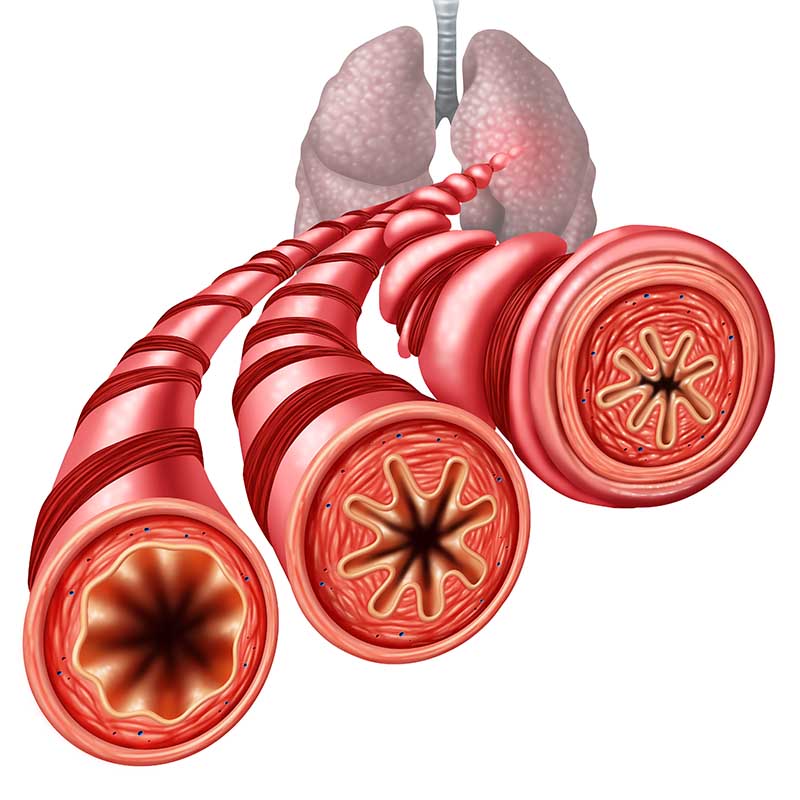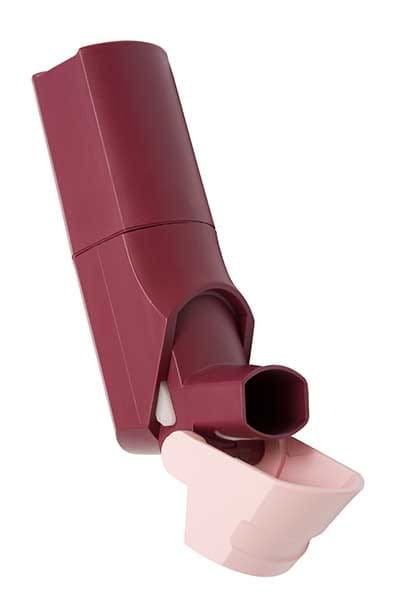Speaker: Anneke ten Brinke
The focus of this session is on the use of as-needed inhaled corticosteroids (ICS) combined with formoterol in the management of mild asthma. This approach is discussed in the context of the European Respiratory Society (ERS) guidelines, addressing current limitations in evidence and barriers to implementation. A clinical case was discussed which involves a young male patient with allergic asthma, experiencing symptoms less than once a week, particularly during allergy season, with a pre-bronchodilator forced expiratory volume in one second (FEV1) of 82% of predicted, improving to 90% post-bronchodilator, and no history of exacerbations. Most clinicians preferred as-needed ICS-formoterol followed by other treatment options such as low-dose ICS with as needed SABA, as-needed short-acting beta-agonists (SABA) or as needed ICS-albuterol.
Mild asthma remains a common condition, affecting millions, and treatment choices play a significant role in patient outcomes. Despite being classified as mild, these patients may still exhibit severe airway inflammation, exacerbations, and even fatalities. One third of asthma-related deaths occur in patients considered to have mild disease, challenging the misconception that occasional symptoms pose minimal risk. Furthermore, frequent courses of oral corticosteroids (OCS) are linked to a higher risk of side effects after just four to five courses in a lifetime. Adherence to asthma therapy is a challenge, particularly among adolescents, with many patients relying solely on SABA inhalers when symptomatic, leading to ICS underuse. This pattern results in widespread SABA overuse, which is associated with poor outcomes, including more frequent exacerbations and increased mortality. Studies across Europe reveal that up to 30% of patients with mild asthma overuse SABA, defined as using three or more canisters annually, contributing to uncontrolled asthma.
In response to this issue, an anti-inflammatory reliever strategy has been tested, where ICS is combined with a rapid-acting bronchodilator, such as formoterol, to be used as needed during symptomatic episodes. This ensures that ICS is administered when most needed. Initial trials, including the Steroid Inhalation as Needed for Mild Asthma (SYGMA 1) and SYGMA 2 studies, compared the efficacy of as-needed ICS-formoterol with SABA alone and maintenance low-dose budesonide plus SABA. The results demonstrated that as-needed ICS-formoterol significantly reduced exacerbation risk by more than 60% compared to SABA alone and was as effective as maintenance budesonide, but with a lower overall ICS dose. Subsequent trials further validated the anti-inflammatory reliever strategy, leading to updated recommendations by the Global Initiative for Asthma (GINA), which now suggests that ICS-formoterol as-needed without maintenance therapy should be the first-line treatment for mild asthma. However, these recommendations are not universally adopted, and the approach is yet to be approved in several countries, including the United States and European Union member states.
In response to these challenges, the ERS established a task force to develop guidelines based on a systematic review, using the Grading of Recommendations Assessment, Development and Evaluation (GRADE) approach to ensure the recommendations are robust, reliable, and transparent, providing necessary guidance for regulatory authorities.
The ERS guidelines address two pivotal questions concerning the management of mild asthma with as-needed ICS combined with formoterol, without maintenance treatment. The first question focuses on whether as-needed ICS-formoterol is superior to as-needed SABA and the second question examines whether as-needed ICS-formoterol is a better option compared to low-dose maintenance ICS plus as-needed SABA. The task force reviewed over 500 publications, including three studies in the final analysis. The results demonstrated that as-needed ICS-formoterol significantly reduces severe exacerbations by approximately 50% and emergency room visits by about 75%. Asthma control is also improved with lower Asthma Control Questionnaire (ACQ) scores, though the differences are small and do not exceed the minimal clinically important difference, indicating no significant impact on day-to-day symptoms. Additionally, the use of ICS-formoterol results in a marked reduction in systemic corticosteroid doses by more than 50%, alongside a decrease in the use of rescue medication. While there was a favorable effect on FEV1, the differences were minimal and unlikely to have significant clinical implications. No differences in adverse events were observed, and data on mortality were limited, with only one reported event. Based on the substantial reduction in exacerbations and systemic corticosteroid exposure, the ERS task force recommends the use of as-needed ICS-formoterol in a single inhaler for adults and adolescents with mild asthma at GINA treatment steps 1 and 2, as an alternative to as-needed SABA.
In comparing as-needed ICS-formoterol to low-dose maintenance ICS plus as-needed SABA, six studies were included in the analysis, all using budesonide in the ICS-formoterol combination. The results showed no significant differences in exacerbations, asthma control, or quality of life. However, systemic corticosteroid doses were reduced by 30%, and there was a decrease in overall ICS exposure. The differences in FEV1 were small and in favor of maintenance ICS, but their clinical relevance remains uncertain. Given these findings, the task force suggests the use of as-needed ICS-formoterol without maintenance treatment for adults with mild asthma, while either strategy may be considered in adolescents due to limited data. Despite these recommendations, several questions remain unanswered. It is unclear whether all patients with mild asthma would benefit from this approach, particularly those who are adherent to maintenance ICS. The impact of inflammatory profiles, potential under treatment in poor responders, and the effectiveness of different ICS-formoterol combinations and devices need further investigation, especially in regions where this approach is not yet approved. Additionally, more studies are required to evaluate the cost-effectiveness of this strategy, considering not only direct drug costs but also indirect costs associated with emergency visits and lost productivity. Lastly, long-term outcomes, particularly in lung function decline, require closer monitoring to assess individual patient variability.
The implementation of Anti-Inflammatory Reliever (AIR) strategies, particularly the use of as-needed ICS formoterol in mild asthma, faces several significant barriers despite growing evidence supporting its efficacy. One of the most prominent obstacles is patient resistance to change. Many patients, especially long-term users of SABA, are accustomed to the immediate relief provided by SABA and may be reluctant to adopt ICS-formoterol, which they perceive as less effective in providing rapid symptom relief. This reliance on SABA for immediate bronchodilation poses a challenge in convincing patients to switch to a regimen that prioritizes long-term asthma control and reduction of exacerbations over short-term symptom management. In addition to patient-related barriers, there are structural and regulatory challenges that hinder the widespread adoption of ICS-formoterol. A lack of endorsement from major regulatory agencies such as the Food and Drug Administration (FDA) and the European Medicines Agency (EMA) in several countries leaves prescribers without official guidance, potentially deterring them from fully adopting this approach. National guidelines in many regions have yet to reflect the shift toward as-needed ICS-formoterol, further complicating its implementation in clinical practice. Cost and accessibility are also key concerns.
In some regions, ICS-formoterol is more expensive than SABA, which could limit its uptake, particularly in lower-income populations. Additionally, the availability of combination inhalers containing ICS-formoterol may be limited in certain areas, posing logistical challenges for both healthcare providers and patients. Furthermore, while most patients prefer the convenience of a dry powder inhaler (DPI) for ICS-formoterol, some report difficulty using the DPI during severe symptoms, where rapid and effective inhalation may be impaired. Concerns about the environmental impact of metered-dose inhalers (MDIs) have prompted a preference for DPIs, which are seen as more environmentally friendly, but this remains a secondary consideration for many patients. Studies indicate that 90% of patients randomized to as-needed budesonide-formoterol preferred this treatment. Overall, the benefits of as-needed ICS-formoterol, including reduced exacerbations and lower corticosteroid exposure, are well-documented, these barriers must be addressed to ensure broader implementation of AIR strategies in mild asthma management.
To conclude, SABA monotherapy should no longer be prescribed for mild asthma. As-needed ICS-formoterol is preferred, as it significantly reduces severe asthma exacerbations compared to SABA alone. It is as effective as regular ICS with SABA in managing exacerbation risk but requires a much lower dose, resulting in a favorable risk/benefit profile. Most patients prefer using a combination treatment as needed over daily inhalers.
A question was raised regarding the potential facilitation of ICS-formoterol adoption due to the SABA shortage in Europe. The response noted that while the shortage might indeed expedite this change, the perception of ICS-formoterol as pharma-driven needs addressing.
Although some studies were initiated by pharmaceutical companies, independent research has corroborated these findings, demonstrating that the therapy's benefits are well-supported beyond industry interests. Regarding the use of different ICS combinations, such as fluticasone-salmeterol for maintenance and budesonide-formoterol for relief, this practice is not recommended due to increased risk of side effects and complexity. It is advised to use a single inhaler for both maintenance and as-needed relief to simplify treatment and reduce adverse effects. Concerns about data robustness highlight the need for additional real-world evidence. While RCTs provide critical insights, real-world data are essential to validate the long-term effectiveness and practicality of new therapies. Continued research is necessary to address existing knowledge gaps and refine treatment strategies.
European Respiratory Society Congress 2024, 7–11 September, Vienna, Austria.




